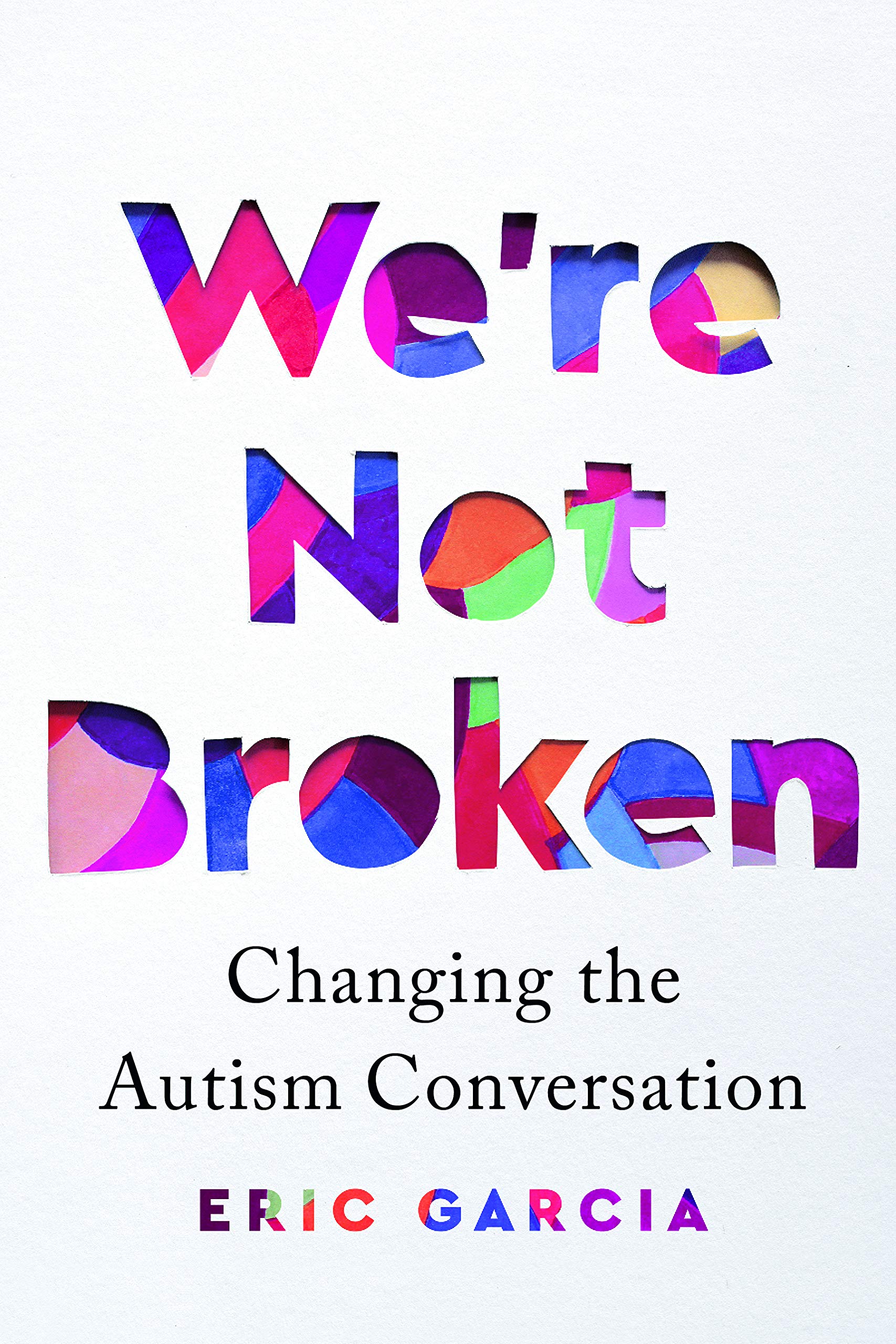
Since Temple Grandin made headlines in the 1980s as the first openly autistic adult to be recognized in the media, many autistics have made memoirs about their personal experiences since her heyday. However, most just cover one perspective of autism but don’t highlight the rest of the spectrum. We’re Not Broken: Changing the Autism Conversation by Eric Garcia achieves what the title implies, being a mixture of personal memoir, autistic history, and a retrospective of how autistic people are treated in society.
Garcia’s perspective is unique in that he’s an autistic journalist, which challenges the stereotype that autistic people are not social. His journalistic adventures are a fresh and unique addition to the story, thrusting readers into his world of political reporting with a great sense of description. Despite his success in life, Garcia is not afraid to detail even his most personal struggles, which makes him relatable to any autistic reader following along. He proves that autistic people share more in common with each other (regardless of how their needs manifest) than many tend to believe.
Since many people such as doctors and professionals still use labels like “high” and “low” functioning, Garcia succeeds in showing just how arbitrary and dated those ideas are. At the same time, he does not act as an all-powerful voice speaking for all autistics, but rather as someone in the middle who has exposed himself to many autistic perspectives, reporting as he goes.
The book touches on many areas in life that affect the autistic experience, such as employment, relationships, race, and gender. Throughout the book, Garcia poses questions that would benefit the autistic community greatly if people just changed their perceptions. “No one should presume to know what autistic people can do; what should be presumed is that autistic people belong in whichever professions they choose,” he writes. “That being said, autistic people’s value and worth should not be tied to whether they are employable. It doesn’t matter if an autistic person holds a high-paying job or receives government assistance; autistic people should be viewed with the same dignity that all people deserve.”
Although his words of wisdom are thought-provoking, the people Garcia interviews carry the narrative just as well as the author himself. For example, he interviews Julia Bascom, the Executive Director of the Autistic Self Advocacy Network, one of many revered figures in the autistic community who lend their words to the story. She reveals that while she leads one of the top autistic-led organizations, she still needs the help of a support worker to complete certain daily tasks, and to accompany her when she gives speeches or shops for groceries. It’s another reason why a label such as “high-functioning” can be misleading.
The intersectionality of race and autism is not touched upon nearly as much as it should be, and the author includes his own experiences with racial discrimination as well as others he interviewed. Because Garcia didn’t have a press pass at a state legislature meeting in Raleigh, North Carolina, two officers approached him and asked to check his backpack. Being terrified, Garcia froze and called his editor, who vouched for him. He also had an Arabic textbook for one of his classes in the bag. Garcia felt that the book, combined with his California ID, dark skin, and lack of connections to North Carolina, he would be accused of plotting a terrorist attack. Thankfully, he was able to escape the situation. However, there are so many BIPOC autistic people who are not so lucky and get killed before they get to explain their side, such as Elijah McClain, who Garcia mentions in the story.
Once the story is over, the author compares his autistic experiences with other renowned autistic individuals whose traits manifest quite differently from his, bridging the divide that functioning labels are prone to creating. Garcia excels in questioning the issues that affect the autistic community universally. While not pretending to know all the answers, he finds a way to leave the questions in the readers’ consciousness so they can possibly provide their own solutions. There are not many books that can bring the entire autistic community together, but We’re Not Broken proves that such an idea is certainly possible.

Thank you so much for reviewing this book. Are any of the interviews appropriate for an autistic 11 yr old?
I would say that they’re appropriate, yes. Although the one for JayJay is not, as it discusses their experiences being sexually assaulted.